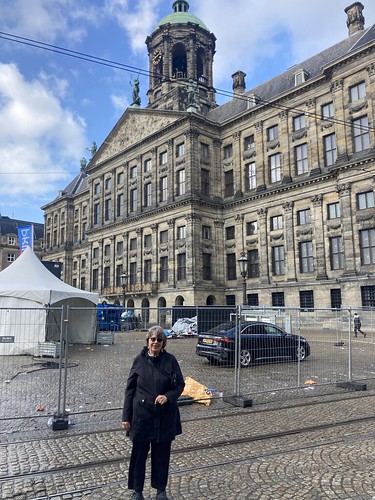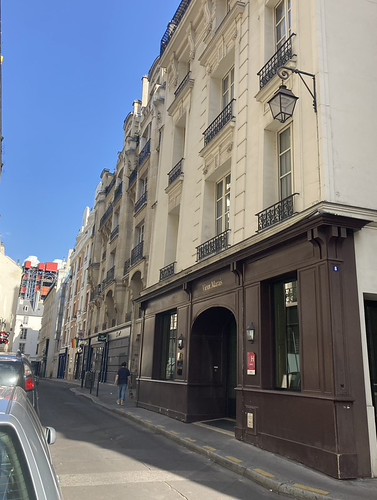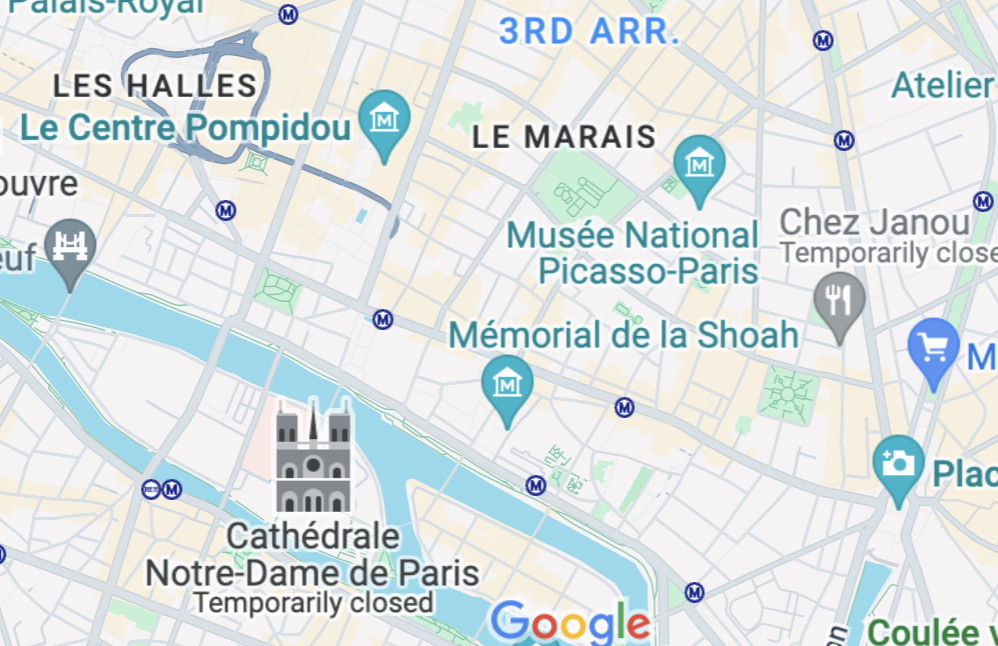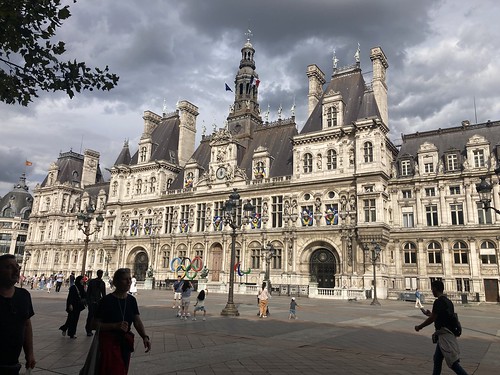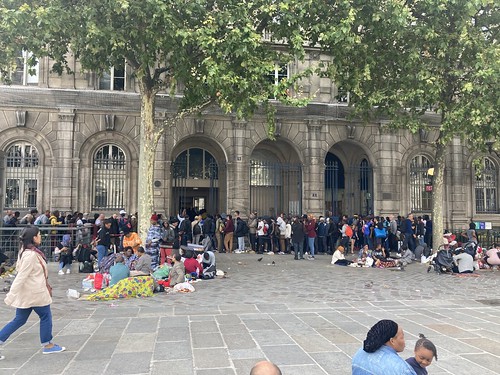Paris–August 7
On a walk around the neighborhood, before our scheduled train departure for Paris, we happened upon a building fronting a large square where booths, stages and grandstands left from previous days’ Pride celebrations were being dismantled. It was the Royal Palace of Amsterdam, originally built as a City Hall in 1655, later converted to a Royal Palace by the conqueror Napoleon’s brother Louis Napoleon in 1806 and eventually appropriated by the Dutch Royal Family who retain control of it today.
We arrived at the grandiose Paris Gare du Nord in the early afternoon
and took an Uber to the quaint Hotel du Vieux Marais.
The Marais district is centrally located and packed with short narrow streets walkable even for those with mobility challenges. It retains its pre Napoleonic old-city layout and a tourist friendly, bohemian atmosphere. Before the Holocaust it housed the largest Jewish community in Europe, 75% of which was wiped out by the Nazis.
After a short nap, we wandered down the Rue des Archives without a destination, recalling our wonderstruck first experiences in London, Strasbourg and Amsterdam. The street widened to reveal another City Hall, the Hotel de Ville.
At the corner we reached the Seine and followed the riverbank quai along the building’s grand south facade.
At the next corner, we were awed by the even grander west facade and plaza.
Built and expanded as a royal palace by monarchs between the 16th and 17th centuries, this building served as the headquarters of the government during the French Revolution and was occupied by the Paris Commune in 1870-1871. At the approach of the French army it was set on fire by the Communards, along with most of the City’s archives inside and was reconstructed according to the original design between 1873 and 1891.
At the west side of the plaza, a peaceful crowd was gathered, waiting, we were told, for housing vouchers and free meals. I was reminded of the massive riots in Paris a month ago which now seemed to have been relegated to old news.
Searching for a place for our first Paris dinner, we returned to the quai, and a block north of the Hotel de Ville found an appealing restaurant called “Louis Philippe” after the restored monarch from 1837 to 1848, known as the Citizen King. His regime steered a conservative course between extreme right and left wing parties until it was toppled by another revolution in 1848.
The place had outdoor seating with a view of the river and graced by large trees. After a fine meal less costly than an average one at home we headed up an alley in the direction of our hotel.
We noticed a red door framed by classically styled columns and pediment.
Not until we passed into the Gothic interior was it evident that we’d entered a cathedral.
We learned from a pamphlet at the door that this was the Church of Saint Gervais and Saint Protais, the Gothic portion built during the late fifteenth century, and the back door through which we’d entered, along with the front facade which we discovered upon walking around the outside, built a century later in the French Baroque style based on Renaissance and Classical models.
The treed plaza in front offered a panoramic view of the Hotel de Ville, the river behind it, and church behind us, all crammed into the space we’d just walked.

